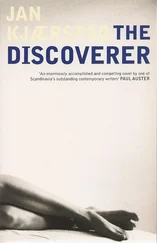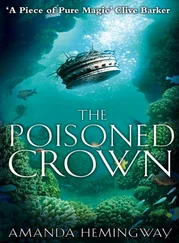Jonas regarded the boy curiously. He had noticed that his feet barely seemed to touch the steps.
At the top, which they reached after a break and another two hundred or so steps, was a chapel with a corrugated iron roof and a mosque, both of pink granite. The boy disappeared, and Jonas sat down, exhausted, on a knoll close by the mosque, facing the cliff edge, from which the slope fell away sharply. Right at the very edge lay a little circle of small stones. Jonas walked over to it, still out of breath, and removed a few stones, creating an opening, he had no idea why, then sat down again. The sun was just coming up. Jonas felt limp, listless; he sat there, surveying the rugged mountains stretching out in all directions, sharp, jagged earthenware that had cracked, but which was now starting to turn every shade of violet and pink, making Jonas feel as if the entire landscape had not only been formed in, but had now been transported back to, a bygone geological age, to a time before man walked the Earth. The view did not make him feel at all dizzy or sick, possibly because the whole scene had an abstract air about it, giving no illusion of a broader perspective. It made no difference whether the distances, the heights, were great or small. There was still nothing but light and shade and silence. Jonas sat there on his own: looking out across the mountains and listening to the wind, a soft sough, louder now. All of a sudden, the Bedouin boy popped up out of nowhere with a hot cup of tea. Jonas pulled out his Hohner Chromonica mouth organ and gave it to the lad before he disappeared once more behind some hillocks. Jonas tried to eat, took a piece of the bread stamped with the image of St Catherine, drank half the tea.
All day he sat there alone. No one else came along. The boy did not show himself again either. Jones sat there on the top, in the blazing sun, watching the jagged mountain peaks changing colour, like the spines of gigantic chameleons: pink and blue, terracotta and ochre, shifting to red and grey. Like one huge, glowing crystal. A prism, he thought, breaking the light up into colours. Or lifting the landscape out of time and space. As if he were already in some other place, beyond life. Nothing but light, nothing but shadows, nothing but silence. He tried to think, to take stock as it were, but no thoughts came. He was a blank. And all the while this indefinable soughing was all around him. A sough that was pure silence. At one point, just as he was about to nod off, he felt, or thought he felt, the distinct touch, as of a finger, on his brow, describing a circle several times and then shooting off in a straight line.
What more can I say? Some stories simply cannot be told.
Jonas ate the rest of the bread and drank what was left of the tea. He had been considering staying there, just lying down, shutting his eyes, but as the sun began to go down he felt better and stood up. He was better. He stood for a long time gazing at that prehistoric landscape, shimmering as if with precious stones, and felt himself all over, while the soughing round about him seemed almost to take on the nature of something physical, of a golden room. He walked over to the steps and began the descent. Halfway down, as dusk was falling, rapidly, he met the boy with the torch. The boy smiled, held the mouth organ out to him, a bar of silver in the gloom. Jonas waved it away, giving the boy to understand that he was to keep it.
The story could have ended there, but this incident was to have consequences that are known to me, and me alone — consequences that would affect an entire world. The fact is that when Jonas broke that little circle of stones on the top of Mount Sinai, he intervened decisively in history for the first and last time.
At some point in our lives we all do it. It is just that we do not see it.
So I will give it to you straight: it was Jonas Wergeland who was responsible for the president of Egypt, Muhammed Anwar Al-Sadat, flying to Jerusalem, thereby taking one of the most sensational initiatives of the latter half of the twentieth century. I know, and I understand, that many people will find this hard to believe. Nonetheless: look at the date. Jonas Wergeland was sitting on the top of Mount Sinai at the beginning of November 1977. And on November 20 President Sadat spoke to the Knesset in Jerusalem.
Everyone, not least the experts, has wondered about this trip and how it could have come about — a trip which led in a roundabout way to the meetings at Camp David and a peace treaty between arch-enemies Egypt and Israel. It is no exaggeration to say that Sadat’s offer to fly to Jerusalem took the whole world by surprise, bypassing as it did all of the formalities and questions of protocol and thus vaulting over the solid barriers of mutual distrust. Absolutely no one could have predicted such a courageous action, indeed all knowledge of the Middle East conflict pointed to the exact opposite. Sadat himself had roundly dismissed any idea of such a thing only months before making the trip. Nor does the myth of an invincible Israel serve as an explanation: that was quashed by the October war.
So what, if I might ask, prompted this unprecedented and totally unexpected decision on the part of Sadat, this unique attempt to breach the walls of a rigid mindset, and indeed to change actual events? Because behind this journey lay an idea that sought to alter Israel’s fundamental attitude , its way of thinking, its arrogance: a vision which, and deservedly so, was rewarded with the Nobel Peace Prize. The Arab world had had thirty years of living at loggerheads with Israel, fought four wars, witnessed a succession of massacres and acts of terrorism, felt hate, bitterness. A huge psychological barrier had grown up, a wall of suspicion and fear between the two parties. They were, as Sadat himself put it, in the process of being ‘caught in a terrible vicious circle ’. Note that expression: ‘vicious circle’.
All written and oral sources affirm that Sadat said not one word about this extremely bold initiative until just a few days before November 9, when he announced his intention at the opening of the new session of the national assembly. A look at Sadat’s activities immediately prior to this date shows, however, that he set out on a round trip to Rumania, Iran and Saudi Arabia just as Jonas was arriving in Sinai. Hence, I can reveal that it was on the flight from Saudi Arabia back to Egypt, while he was in the air directly above Jonas Wergeland, who was sitting atop Mount Sinai breaking a circle of stones, that Sadat was struck by the impulse which would, only a couple of days after his landing in Cairo, burst into full bloom: the idea that he should go to Jerusalem alone.
How can I possibly make such an assertion? Because I know it is so. And since for many people such a notion goes against the grain, I merely offer it as one theory to be set alongside all other explanations: that way at least it can be considered. That is all I ask.
So, how do the pieces of a life fit together?
Jonas Wergeland returned to Norway and after a few weeks he went to see the doctor, even though he knew there was no need. He was quite healthy. The X-rays, the tests, revealed a perfectly normal inner landscape. The doctors were baffled. And who can blame them? After all, medical science has not really advanced all that far.
The year after he graduated from high school, Jonas Wergeland received a letter from Axel Stranger, who was in India. And even though Axel’s witty description of his run-ins with the Indian multitudes is worthy of a whole story to itself, Jonas’s attention was caught by something else, a detail; the stamp, or rather, one of the stamps on the envelope. This stamp bore the picture of an elderly, bearded man in profile, looking into a microscope. In the upper left-hand corner of the stamp hovered a circle, like a full moon, surrounded by shady patches. ‘Chromosomes’ was Jonas’s first thought, seeing that the letter was from Axel — in Axel’s life even the choice of a stamp was a conscious action. But among the foreign characters he made out some other words in Roman letters: ‘Dr Hansen,’ he read, and ‘Centenary of the discovery of leprosy bacillus’.
Читать дальше












